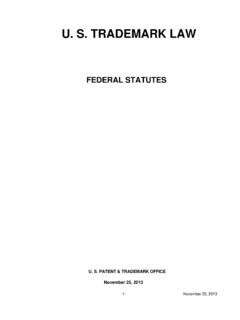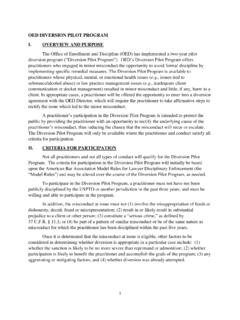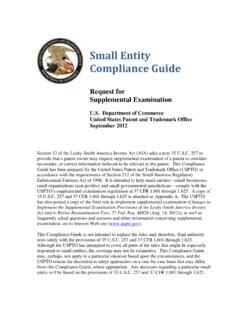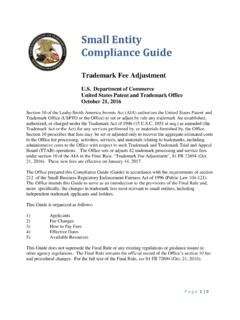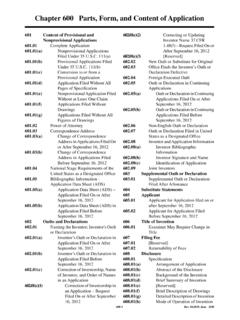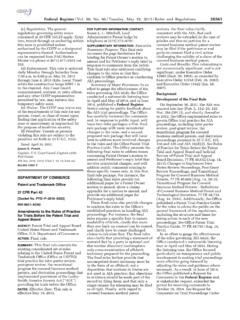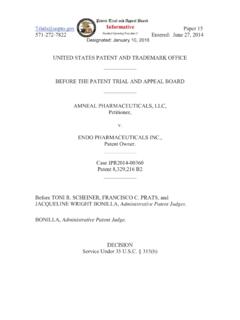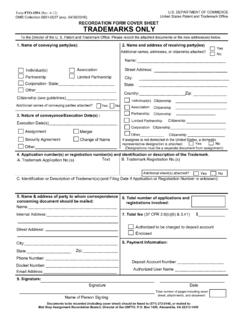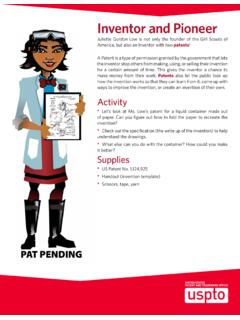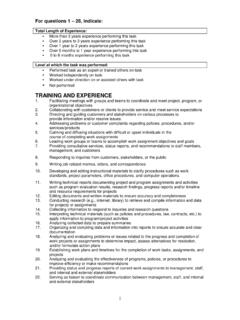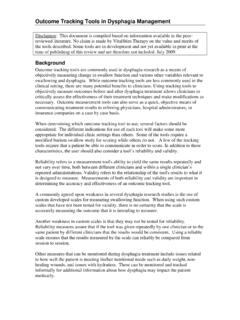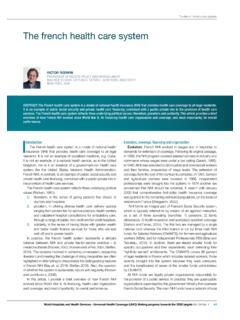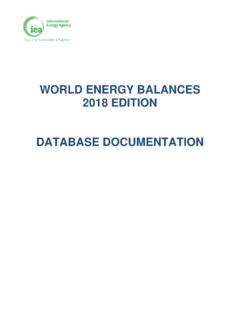Transcription of Number 5, October 2020 Inventing AI
1 OFFICE OF THE CHIEF ECONOMIST IP DATA HIGHLIGHTSN umber 5, October 2020 Inventing AITracing the diffusion of artificial intelligence with patentsUnited States Patent and Trademark Office 1 Inventing Patent and Trademark Office Office of the Chief Economist IP DATA HIGHLIGHTS Number 5, October 2020 Inventing AITracing the diffusion of artificial intelligence with patentsProject teamThis report was prepared by the Office of the Chief Economist at the United States Patent and Trademark Office (USPTO) in collaboration with the USPTO s Patent Organization and the Office of Policy and International A.
2 Toole Nicholas A. PairoleroAlexander V. GiczyJames Q. Forman Christyann Pulliam Matthew SuchKakali ChakiDavid B. Orange Anne Thomas HomescuJesse FrumkinYing Yu ChenVincent M. GonzalesChristian HannonSteve MelnickEric NilssonBen M. RifkinAcknowledgments: The project team thanks Teresa Verigan and Melissa Harvey for the layout and visualization work for this report. The team also thanks several others who provided insightful comments on earlier drafts, including Shira Perlmutter, Nicholas Rada, and John States Patent and Trademark Office 2 Inventing AIKEY FINDINGS Artificial intelligence (AI) is increasingly important for invention, diffusing broadly across technologies, inventor-patentees, organizations, and geography.
3 In the 16 years from 2002 to 2018, annual AI patent applications increased by more than 100%, rising from 30,000 to more than 60,000 annually. Over the same period, the share of all patent applications that contain AI grew from 9% to nearly 16%. Patents containing AI appeared in about 9% of all technology subclasses used by the USPTO in 1976 and spread to more than 42% by 2018. The percentage of inventor-patentees who are active in AI started at 1% in 1976 and increased to 25% by 2018. Growth in the percentage of organizations patenting in AI has been similar. Most of the top 30 AI companies are in the information and communications technology sector, with some notable exceptions such as Bank of America, Boeing, and General Electric.
4 AI diffusion is occurring widely across the United States. For example, inventor-patentees in Oregon are using AI in fitness training and equipment, and in North Dakota, AI is used in See Turing (1950), 433, in which Turing introduces the imitation game. 2 These AI systems cannot answer every question, but they are increasingly able to assist with routine tasks, improving their under-standing over time with machine learning. Additional improvements are potentially possible by incorporating aspects of developmental psychology, cognitive science, and neuroscience. See Knight (2019).
5 3 Many more advances are necessary before automobiles become fully autonomous, although the state of the art has recently improved rapidly. See Mallozzi et al. (2019); and Yurtsever et al. (2020).4 See Agrawal, Gans, and Goldfarb (2018).5 See Bresnahan and Trajtenberg (1995); Brynjolfsson and McAfee (2014); and Brynjolfsson, Rock, and Syverson (2019).IntroductionIn a seminal paper on artificial intelligence (AI) published in 1950, Alan Turing considered the ques-tion Can machines think? and focused on how machines might imitate Today, progress in AI has advanced in ways that Turing could appreci-ate.
6 Adults and children can call out questions in the comfort of their homes, and digital assistants will recognize their voices, interpret the questions, and respond with Meanwhile, robotic vacu-ums navigate the complicated terrain of their living rooms. On the streets, automobiles scan and interpret their surrounding environments and are beginning to navigate with increased Decision-making throughout the economy such as in commerce, transportation logistics, health care, and finance is increasingly improved by the incorporation of predic-tions made by broad scope of new products and services that build on AI technologies suggests that AI has the potential to fundamentally change how people per-ceive the world around them and live their daily lives.
7 This is the essence of technological progress , and realizing these changes happens through innovation. AI is poised to revolutionize the world on the scale of the steam engine and The question is how to gauge the potential impact of AI. One indicator is the nature and diffusion of AI tech-nologies through patents. As the primary form of legal protection for inventions, patents can reveal whether AI technologies are growing in volume and, importantly, whether they are diffusing across a broad spectrum of technical areas, inventors, companies, and this report, we use AI to discover AI.
8 That is, we use a machine learning AI algorithm to determine the volume, nature, and evolution of AI and its component United States Patent and Trademark Office 3 Inventing AItechnologies as contained in patents from 1976 through 2018 (called a patent landscape). The report builds on recent AI landscaping efforts by the European Patent Office (EPO), the World Intellectual Property Organization (WIPO), and Our primary 6 See EPO (2017); WIPO (2019); CISTP (2018); IP Australia (2019); JPO (2019); OECD (2019); UKIPO (2019); and CIPO (2020).7 See Trippe (2015); Abood and Feltenberger (2018); and Toole et al.
9 (2020).8 To learn more about the structure and performance of our AI algorithm, see the overview provided in the Appendix. For additional details and discussion, please refer to the online NIST (2019), 7-8. In a leading textbook, Russell and Norvig (2016) define AI broadly as the development of machines capable of under-taking human activities in four areas: thinking humanly, acting humanly, thinking rationally, and acting over those landscapes involves using an AI method that flexibly learns from the text of patent documents without being overly constrained by specific classifications and This approach improves the accuracy of identifying AI is AI?
10 The National Institute of Standards and Technology (NIST) define AI technologies and systems to com-prise software and/or hardware that can learn to solve complex problems, make predictions or undertake tasks that require human-like sensing (such as vision, speech, and touch), perception, cognition, planning, learning, communication, or physical action. 9 Although carefully constructed, this definition is not specific enough for a patent level analysis. For patent applica-tions and grants, we define AI as comprising one or more of eight component technologies (as illustrated in Figure 1).
